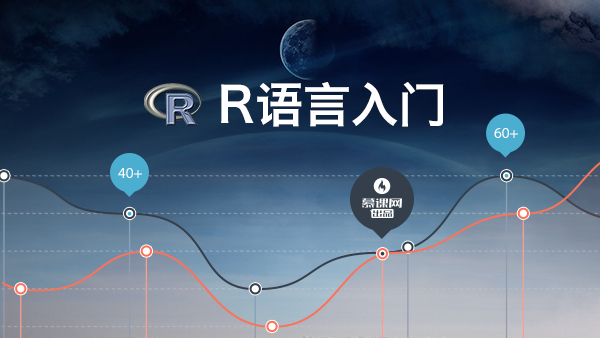本文详细介绍了分布式流媒体系统项目实战的全过程,涵盖系统架构设计、代码实现、常见问题解决及性能优化策略。通过本教程,读者可以深入了解并实践搭建高效稳定的分布式流媒体系统,提升用户体验。文中还提供了详细的代码示例和部署维护指南,帮助读者全面掌握分布式流媒体系统项目实战。
分布式流媒体系统简介什么是分布式流媒体系统
分布式流媒体系统是一种将流媒体内容(如视频、音频)通过分布式网络进行传输的技术系统。它将媒体内容分割成多个小片段,并将这些片段分发到多个服务器上,通过网络将这些片段传输给终端用户。这种系统可以提供高效的内容分发、负载均衡和容错能力,从而提高用户体验。
分布式流媒体系统的优势
- 提高可靠性:通过冗余存储,分布式系统可以在某个节点故障时,迅速从其他节点获取数据,从而确保服务的持续性。
- 负载均衡:多个服务器共同承担流量,避免单一服务器过载,提高了系统的稳定性和响应速度。
- 提高传输效率:通过智能路由,可以根据网络状况动态调整传输路径,确保媒体内容高效传输。
- 扩展性强:系统可以根据用户需求,灵活扩展服务器资源,实现无缝升级。
- 支持多种设备:能够适应多种终端设备,如智能手机、平板电脑、智能电视等,提供一致的用户体验。
- 内容保护:通过加密和认证机制,保护流媒体内容不被非法复制和传播。
- 支持地区化:可以根据地理位置智能分配服务器资源,降低延迟,提高播放质量。
开发环境搭建
开发分布式流媒体系统需要搭建一个合适的开发环境。以下是搭建步骤:
- 操作系统:可以选择Linux、Windows或macOS作为开发环境。对于服务器端,推荐使用Linux发行版,如Ubuntu或CentOS,因为它们在服务器环境中表现稳定。
- 开发工具:常用的开发工具包括Visual Studio Code、IntelliJ IDEA、Sublime Text等。这些工具都支持多种编程语言,可以根据项目需求选择合适的开发工具。例如,使用Visual Studio Code安装和配置过程如下:
- 访问官方网站:https://code.visualstudio.com/
- 下载相应版本的安装包。
- 选择合适的安装语言,点击“安装”。
- 按照提示完成安装。
- 使用示例:
# 安装VS Code插件 code --install-extension visualstudio.code-runner
- 编程语言:分布式流媒体系统通常使用Java、Python或Node.js等语言。Java因其跨平台、稳定性和丰富的库支持而被广泛使用。
- 服务器软件:需要安装Web服务器软件,如Apache Tomcat、Nginx等。这些软件可以提供HTTP/HTTPS服务,用于传输流媒体数据。例如,安装Apache Tomcat步骤如下:
- 下载Tomcat安装包:https://tomcat.apache.org/
- 解压下载的安装包。
- 设置环境变量
CATALINA_HOME。 - 配置
conf/server.xml文件以调整端口和其他设置。 - 启动Tomcat:
# 启动Tomcat cd /path/to/tomcat ./bin/startup.sh
- 数据库:可以选择MySQL、PostgreSQL或MongoDB等数据库,用于存储流媒体元数据、用户信息等。
- 开发库与框架:例如Spring Boot、Flask、Express等,可以简化开发流程,提高开发效率。
-
版本控制工具:如Git,用于代码版本控制,便于多人协作。例如,使用Git安装和配置过程如下:
- 访问官方网站:https://git-scm.com/
- 下载并安装相应版本的Git。
- 配置用户名和邮箱:
git config --global user.name "Your Name" git config --global user.email "your.email@example.com" -
使用示例:
# 初始化Git仓库 git init # 添加文件到仓库 git add . # 提交文件到本地仓库 git commit -m "Initial commit"
- 虚拟化技术:可以使用Docker或Kubernetes等工具,简化部署和维护过程。
- 网络环境:需要稳定的网络环境,包括服务器的网络连接和本地开发环境的网络连接。
必要工具介绍
- 开发工具:Visual Studio Code
- 安装过程:
- 访问官方网站:https://code.visualstudio.com/
- 下载相应版本的安装包。
- 选择合适的安装语言,点击“安装”。
- 按照提示完成安装。
- 使用示例:
# 安装VS Code插件 code --install-extension visualstudio.code-runner
- 安装过程:
-
版本控制工具:Git
- 安装过程:
- 访问官方网站:https://git-scm.com/
- 下载并安装相应版本的Git。
- 配置用户名和邮箱:
git config --global user.name "Your Name" git config --global user.email "your.email@example.com"
-
使用示例:
# 初始化Git仓库 git init # 添加文件到仓库 git add . # 提交文件到本地仓库 git commit -m "Initial commit"
- 安装过程:
- Web服务器:Apache Tomcat
- 安装过程:
- 下载Tomcat安装包:https://tomcat.apache.org/
- 解压下载的安装包。
- 设置环境变量
CATALINA_HOME。 - 配置
conf/server.xml文件以调整端口和其他设置。 - 启动Tomcat:
# 启动Tomcat cd /path/to/tomcat ./bin/startup.sh
- 使用示例:
# 部署一个Java Web应用 cp /path/to/your/webapp.war /path/to/tomcat/webapps/
- 安装过程:
系统模块划分
分布式流媒体系统通常由以下几个模块组成:
-
内容生成模块:
- 用于生成、编码和分割媒体内容,如视频、音频流。
-
内容生成过程通常包括视频编码、音频编码和内容分割,将媒体文件转换为流式格式。例如,使用Java实现内容生成:
package com.example.distributedmediasystem; import java.io.*; import java.nio.file.*; public class ContentGenerator { public static void main(String[] args) throws IOException { String inputFilePath = "/path/to/input/file.mp4"; String outputDir = "/path/to/output/dir"; // Split the video into segments File inputFile = new File(inputFilePath); Path inputPath = Paths.get(inputFile.toURI()); Files.copy(inputPath, Paths.get(outputDir, "index.m3u8")); // Add segment URLs to the index file try (BufferedWriter writer = Files.newBufferedWriter(Paths.get(outputDir, "index.m3u8"))) { writer.write("#EXTM3U\n"); writer.write("#EXT-X-TARGET-DURATION:10\n"); writer.write("#EXT-X-VERSION:4\n"); writer.write("#EXT-X-ALLOW-CACHE:YES\n"); writer.write("#EXT-X-PLAYLIST-TYPE:VOD\n"); writer.write("#EXT-X-ENDLIST\n"); for (int i = 0; i < 10; i++) { String segmentUrl = "segment" + i + ".ts"; writer.write("#EXTINF:10,\n"); writer.write(segmentUrl + "\n"); } } } }
-
内容分发模块:
- 负责将媒体内容分发到多个服务器。
-
内容分发过程通常涉及负载均衡、冗余存储和智能路由。例如,使用Java实现内容分发:
package com.example.distributedmediasystem; import java.io.*; import java.net.*; import java.nio.file.*; public class ContentDistributor { public static void main(String[] args) throws IOException { String contentFilePath = "/path/to/content/file.ts"; String serverList[] = {"http://server1.example.com/", "http://server2.example.com/"}; for (String server : serverList) { distributeContent(contentFilePath, server); } } private static void distributeContent(String contentFilePath, String serverUrl) throws IOException { File contentFile = new File(contentFilePath); Path contentPath = Paths.get(contentFile.toURI()); String contentUrl = serverUrl + "content"; // Distribute the content file to the server URL url = new URL(contentUrl); HttpURLConnection connection = (HttpURLConnection) url.openConnection(); connection.setDoOutput(true); connection.setRequestMethod("POST"); try (InputStream contentStream = Files.newInputStream(contentPath); OutputStream outputStream = connection.getOutputStream()) { byte[] buffer = new byte[4096]; int bytesRead; while ((bytesRead = contentStream.read(buffer)) != -1) { outputStream.write(buffer, 0, bytesRead); } } int responseCode = connection.getResponseCode(); if (responseCode == HttpURLConnection.HTTP_OK) { System.out.println("Content successfully distributed to " + serverUrl); } else { System.out.println("Failed to distribute content to " + serverUrl + ". Response code: " + responseCode); } } }
-
内容传输模块:
- 负责将媒体内容从服务器传输到终端用户设备。
-
内容传输过程通常使用HTTP或RTMP等协议,确保高效传输。例如,使用Java实现HTTP传输:
package com.example.distributedmediasystem; import java.io.*; import java.net.*; public class ContentTransmitter { public static void main(String[] args) throws IOException { String contentUrl = "http://server.example.com/content"; // Retrieve and play the content URL url = new URL(contentUrl); HttpURLConnection connection = (HttpURLConnection) url.openConnection(); connection.setRequestMethod("GET"); try (InputStream contentStream = connection.getInputStream()) { byte[] buffer = new byte[4096]; int bytesRead; while ((bytesRead = contentStream.read(buffer)) != -1) { // Process the content (e.g., play it) System.out.write(buffer, 0, bytesRead); } } } }
-
内容管理模块:
- 管理媒体内容的元数据,如文件名、大小、格式等。
-
内容管理模块通常包括内容存储、索引和检索功能。例如,使用Java和Spring Boot实现内容管理:
package com.example.distributedmediasystem; import org.springframework.beans.factory.annotation.Autowired; import org.springframework.jdbc.core.JdbcTemplate; import org.springframework.web.bind.annotation.*; import java.util.List; @RestController public class ContentController { @Autowired private JdbcTemplate jdbcTemplate; @PostMapping("/content") public void addContent(@RequestBody Content content) { jdbcTemplate.update("INSERT INTO content (name, size, format) VALUES (?, ?, ?)", content.getName(), content.getSize(), content.getFormat()); } @GetMapping("/content") public List<Content> listContent() { return jdbcTemplate.query("SELECT * FROM content", (rs, rowNum) -> new Content( rs.getString("name"), rs.getLong("size"), rs.getString("format") ) ); } }
-
用户交互模块:
- 与终端用户进行交互,提供播放器界面、直播流和点播服务。
-
用户交互模块可能包括前端界面、API接口等。例如,使用HTML和JavaScript实现简单的播放器:
<!DOCTYPE html> <html> <head> <title>Distributed Media Player</title> </head> <body> <h1>Distributed Media Player</h1> <video id="player" controls></video> <script> const videoElement = document.getElementById('player'); // Set the source of the video videoElement.src = 'http://server.example.com/stream.m3u8'; videoElement.load(); // Play the video videoElement.play(); </script> </body> </html>
流媒体传输协议介绍
HTTP Live Streaming (HLS)
- 特点:HLS是一种基于HTTP协议的流媒体传输协议,适用于iOS、Android等设备。它将媒体内容分割成多个小片段,每个片段通常为几秒的视频或音频流。客户端通过HTTP请求获取这些片段,并逐个播放,从而实现流畅的播放效果。
- 适用场景:适合于对延迟要求不高的场景,如直播、点播等。
- 实现原理:
- 索引文件:HLS使用一个M3U8索引文件,列出所有片段的URL。
#EXTM3U #EXT-X-TARGET-DURATION:10 #EXT-X-VERSION:4 #EXT-X-ALLOW-CACHE:YES #EXT-X-PLAYLIST-TYPE:VOD #EXT-X-ENDLIST #EXTINF:10,000000.ts 000000.ts #EXTINF:10,000001.ts 000001.ts ... - 片段文件:每个片段是一个TS文件,包含几秒的媒体数据。
# PCR (Program Clock Reference) # PTS (Presentation Time Stamp) # DTS (Decoding Time Stamp)
- 索引文件:HLS使用一个M3U8索引文件,列出所有片段的URL。
RTSP (Real-Time Streaming Protocol)
- 特点:RTSP是一种基于RTP(Real-Time Protocol)的协议,用于实时流媒体传输,适用于需要低延迟的场景,如视频会议、实时直播等。
- 适用场景:适用场景包括视频会议、实时直播等对延迟有严格要求的应用。
- 实现原理:
- 会话控制:RTSP使用控制消息(如SETUP、PLAY、PAUSE)控制会话。
DESCRIBE rtsp://example.com/path RTSP/1.0 CSeq: 1 User-Agent: MyRTSPClient/1.0 Accept: application/sdp - 媒体传输:RTP协议实际传输媒体数据,使用UDP或TCP传输。
RTP: Sequence Number RTP: Timestamp RTP: Payload Type
- 会话控制:RTSP使用控制消息(如SETUP、PLAY、PAUSE)控制会话。
WebRTC (Web Real-Time Communication)
- 特点:WebRTC是一种基于Web的实时通信协议,适用于浏览器间的实时音视频通信,支持点对点传输,无需中间服务器。
- 适用场景:适用于视频通话、视频会议、实时直播等场景,支持浏览器间的实时通信。
-
实现原理:
- 信令层:通过服务器进行信令交换,建立通信连接。
-
媒体层:使用RTP/RTCP协议传输音视频数据,支持SDP(Session Description Protocol)描述媒体参数。
// 创建RTCPeerConnection对象 const pc = new RTCPeerConnection(); // 添加本地媒体流 const stream = await navigator.mediaDevices.getUserMedia({ video: true, audio: true }); stream.getTracks().forEach(track => pc.addTrack(track, stream)); // 生成offer并设置本地描述 const offer = await pc.createOffer(); await pc.setLocalDescription(offer); // 交换SDP描述 // 在服务器端交换SDP描述,获取对方的SDP描述,然后设置远程描述 await pc.setRemoteDescription(await getRemoteDescription()); // 创建answer并设置本地描述 const answer = await pc.createAnswer(); await pc.setLocalDescription(answer); // 交换完SDP描述后,通过RTCPeerConnection对象传输音视频流
代码实现步骤
步骤1:初始化项目结构
创建项目目录并初始化项目结构:
mkdir distributed-media-system
cd distributed-media-system
mkdir src main resources
touch src/main/java/Main.java
touch src/main/resources/application.properties步骤2:配置应用环境
在application.properties中配置应用需要的环境变量和配置项:
# Spring Boot配置文件
server.port=8080
spring.datasource.url=jdbc:mysql://localhost:3306/distributed_media
spring.datasource.username=root
spring.datasource.password=root步骤3:内容生成模块实现
内容生成模块负责将原始媒体文件转换为流媒体格式。例如,使用Java实现HLS内容生成:
package com.example.distributedmediasystem;
import java.io.*;
import java.nio.file.*;
public class ContentGenerator {
public static void main(String[] args) throws IOException {
String inputFilePath = "/path/to/input/file.mp4";
String outputDir = "/path/to/output/dir";
// Split the video into segments
File inputFile = new File(inputFilePath);
Path inputPath = Paths.get(inputFile.toURI());
Files.copy(inputPath, Paths.get(outputDir, "index.m3u8"));
// Add segment URLs to the index file
try (BufferedWriter writer = Files.newBufferedWriter(Paths.get(outputDir, "index.m3u8"))) {
writer.write("#EXTM3U\n");
writer.write("#EXT-X-TARGET-DURATION:10\n");
writer.write("#EXT-X-VERSION:4\n");
writer.write("#EXT-X-ALLOW-CACHE:YES\n");
writer.write("#EXT-X-PLAYLIST-TYPE:VOD\n");
writer.write("#EXT-X-ENDLIST\n");
for (int i = 0; i < 10; i++) {
String segmentUrl = "segment" + i + ".ts";
writer.write("#EXTINF:10,\n");
writer.write(segmentUrl + "\n");
}
}
}
}步骤4:内容分发模块实现
内容分发模块确保媒体内容被分发到多个服务器上。例如,使用Java实现内容分发:
package com.example.distributedmediasystem;
import java.io.*;
import java.net.*;
import java.nio.file.*;
public class ContentDistributor {
public static void main(String[] args) throws IOException {
String contentFilePath = "/path/to/content/file.ts";
String serverList[] = {"http://server1.example.com/", "http://server2.example.com/"};
for (String server : serverList) {
distributeContent(contentFilePath, server);
}
}
private static void distributeContent(String contentFilePath, String serverUrl) throws IOException {
File contentFile = new File(contentFilePath);
Path contentPath = Paths.get(contentFile.toURI());
String contentUrl = serverUrl + "content";
// Distribute the content file to the server
URL url = new URL(contentUrl);
HttpURLConnection connection = (HttpURLConnection) url.openConnection();
connection.setDoOutput(true);
connection.setRequestMethod("POST");
try (InputStream contentStream = Files.newInputStream(contentPath);
OutputStream outputStream = connection.getOutputStream()) {
byte[] buffer = new byte[4096];
int bytesRead;
while ((bytesRead = contentStream.read(buffer)) != -1) {
outputStream.write(buffer, 0, bytesRead);
}
}
int responseCode = connection.getResponseCode();
if (responseCode == HttpURLConnection.HTTP_OK) {
System.out.println("Content successfully distributed to " + serverUrl);
} else {
System.out.println("Failed to distribute content to " + serverUrl + ". Response code: " + responseCode);
}
}
}步骤5:内容传输模块实现
内容传输模块负责将媒体内容从服务器传输到终端用户设备。例如,使用Java实现HTTP传输:
package com.example.distributedmediasystem;
import java.io.*;
import java.net.*;
public class ContentTransmitter {
public static void main(String[] args) throws IOException {
String contentUrl = "http://server.example.com/content";
// Retrieve and play the content
URL url = new URL(contentUrl);
HttpURLConnection connection = (HttpURLConnection) url.openConnection();
connection.setRequestMethod("GET");
try (InputStream contentStream = connection.getInputStream()) {
byte[] buffer = new byte[4096];
int bytesRead;
while ((bytesRead = contentStream.read(buffer)) != -1) {
// Process the content (e.g., play it)
System.out.write(buffer, 0, bytesRead);
}
}
}
}步骤6:内容管理模块实现
内容管理模块负责存储和索引媒体内容的元数据。例如,使用Java和Spring Boot实现内容管理:
package com.example.distributedmediasystem;
import org.springframework.beans.factory.annotation.Autowired;
import org.springframework.jdbc.core.JdbcTemplate;
import org.springframework.web.bind.annotation.*;
import java.util.List;
@RestController
public class ContentController {
@Autowired
private JdbcTemplate jdbcTemplate;
@PostMapping("/content")
public void addContent(@RequestBody Content content) {
jdbcTemplate.update("INSERT INTO content (name, size, format) VALUES (?, ?, ?)",
content.getName(), content.getSize(), content.getFormat());
}
@GetMapping("/content")
public List<Content> listContent() {
return jdbcTemplate.query("SELECT * FROM content", (rs, rowNum) ->
new Content(
rs.getString("name"),
rs.getLong("size"),
rs.getString("format")
)
);
}
}步骤7:用户交互模块实现
用户交互模块提供播放器界面、直播流和点播服务。例如,使用HTML和JavaScript实现简单的播放器:
<!DOCTYPE html>
<html>
<head>
<title>Distributed Media Player</title>
</head>
<body>
<h1>Distributed Media Player</h1>
<video id="player" controls></video>
<script>
const videoElement = document.getElementById('player');
// Set the source of the video
videoElement.src = 'http://server.example.com/stream.m3u8';
videoElement.load();
// Play the video
videoElement.play();
</script>
</body>
</html>常见问题及解决办法
问题1:内容传输延迟
问题描述:内容传输过程中出现延迟,影响用户体验。
解决办法:
- 优化传输协议:使用更高效的传输协议,如HLS或WebRTC。
- 负载均衡:合理分配服务器资源,确保负载均衡。
- 内容缓存:在边缘服务器上缓存热门内容,减少传输延迟。
- CDN支持:使用内容分发网络(CDN)加速内容传输。
问题2:内容分发失败
问题描述:内容分发到服务器时失败,导致用户无法获取内容。
解决办法:
- 检查网络连接:确保服务器之间的网络连接稳定。
- 冗余存储:多个服务器冗余存储内容,确保内容可用。
- 日志记录:记录分发过程中的日志,便于排查问题。
- 错误处理:编写健壮的错误处理代码,确保内容分发的可靠性。
问题3:内容编码错误
问题描述:内容编码过程中出现错误,导致无法正确播放。
解决办法:
- 检查编码参数:确保编码参数正确,如分辨率、码率等。
- 编码工具选择:选择合适的编码工具,如FFmpeg。
- 错误调试:使用调试工具,检查编码过程中的错误。
- 内容检查:确保原始媒体文件格式正确,无损坏。
测试方法介绍
测试方法1:功能测试
测试目标:验证系统功能是否符合预期。
测试步骤:
- 单元测试:针对每个模块编写单元测试,确保模块内部功能正确。
- 集成测试:测试模块之间的交互,确保系统整体功能正常。
- 接口测试:测试API接口的响应和返回值是否符合预期。
测试方法2:性能测试
测试目标:评估系统在高负载下的性能表现。
测试步骤:
- 负载测试:模拟大量用户访问,测试系统的服务能力。
- 压力测试:通过增加负载,直到系统达到极限,评估系统的稳定性和容错能力。
- 性能优化:根据测试结果,优化系统性能。
测试方法3:用户测试
测试目标:验证系统的用户体验。
测试步骤:
- 功能评估:让用户评估系统的功能是否符合需求。
- 易用性测试:测试系统的用户界面和交互是否友好。
- 反馈收集:收集用户的反馈,改进系统。
性能优化策略
优化策略1:负载均衡
优化方法:通过负载均衡技术,将请求分发到多个服务器,避免单点过载。
实现示例:
import org.springframework.web.bind.annotation.GetMapping;
import org.springframework.web.bind.annotation.RestController;
import org.springframework.web.client.RestTemplate;
@RestController
public class LoadBalancerController {
private final RestTemplate restTemplate = new RestTemplate();
@GetMapping("/loadbalance")
public String loadBalance() {
String[] servers = {"http://server1.example.com", "http://server2.example.com"};
int index = (int) (Math.random() * servers.length);
return restTemplate.getForObject(servers[index], String.class);
}
}优化策略2:缓存机制
优化方法:使用缓存机制,减少服务器的响应时间。
实现示例:
import org.springframework.cache.annotation.Cacheable;
import org.springframework.web.bind.annotation.GetMapping;
import org.springframework.web.bind.annotation.RestController;
import java.util.concurrent.TimeUnit;
@RestController
public class CacheController {
@GetMapping("/cachedContent")
@Cacheable(value = "contentCache", key = "#id", cacheManager = "contentCacheManager")
public String getCachedContent(String id) throws InterruptedException {
Thread.sleep(1000); // Simulate a delay
return "Content for ID: " + id;
}
}优化策略3:异步处理
优化方法:使用异步处理,提高系统的响应速度。
实现示例:
import org.springframework.scheduling.annotation.EnableAsync;
import org.springframework.web.bind.annotation.GetMapping;
import org.springframework.web.bind.annotation.RestController;
import org.springframework.web.context.request.async.DeferredResult;
import java.util.concurrent.CompletableFuture;
@RestController
@EnableAsync
public class AsyncController {
@GetMapping("/asyncContent")
public DeferredResult<String> getAsyncContent() {
DeferredResult<String> result = new DeferredResult<>();
CompletableFuture.supplyAsync(() -> {
try {
Thread.sleep(2000); // Simulate a delay
} catch (InterruptedException e) {
e.printStackTrace();
}
return "Async content";
}).thenAccept(result::setResult);
return result;
}
}部署步骤
- 服务器准备:
- 安装操作系统(如Linux)和必要的软件(如Java、数据库、Web服务器)。
- 代码部署:
- 使用版本控制工具(如Git)将代码同步到服务器。
- 使用构建工具(如Maven或Gradle)将代码编译为可执行文件。
- 配置文件更新:
- 根据服务器环境更新配置文件(如
application.properties)。 - 重启应用或服务器。
- 根据服务器环境更新配置文件(如
- 数据库迁移:
- 迁移数据库结构和数据,确保与生产环境一致。
- 启动应用:
- 使用启动脚本或命令启动应用。
- 使用监控工具(如Prometheus)监控应用状态。
日常维护注意事项
- 定期备份:定期备份数据库和配置文件,防止数据丢失。
- 日志监控:使用日志监控工具(如ELK Stack)监控系统日志,及时发现并处理问题。
- 性能监控:使用性能监控工具(如Prometheus、Grafana)监控系统性能,确保系统稳定运行。
- 安全加固:定期更新系统和软件补丁,防止安全漏洞。
- 版本管理:使用版本控制工具管理代码版本,确保代码的安全和可追溯性。
- 故障排查:定期检查系统日志,及时处理故障。
- 用户体验:定期收集用户反馈,优化用户体验。
- 资源管理:合理分配和管理服务器资源,避免资源浪费。
- 优化更新:根据监控数据和用户反馈,不断优化系统性能和用户体验。
通过以上步骤和注意事项,确保分布式流媒体系统能够稳定运行,并提供高质量的用户体验。

 随时随地看视频
随时随地看视频



